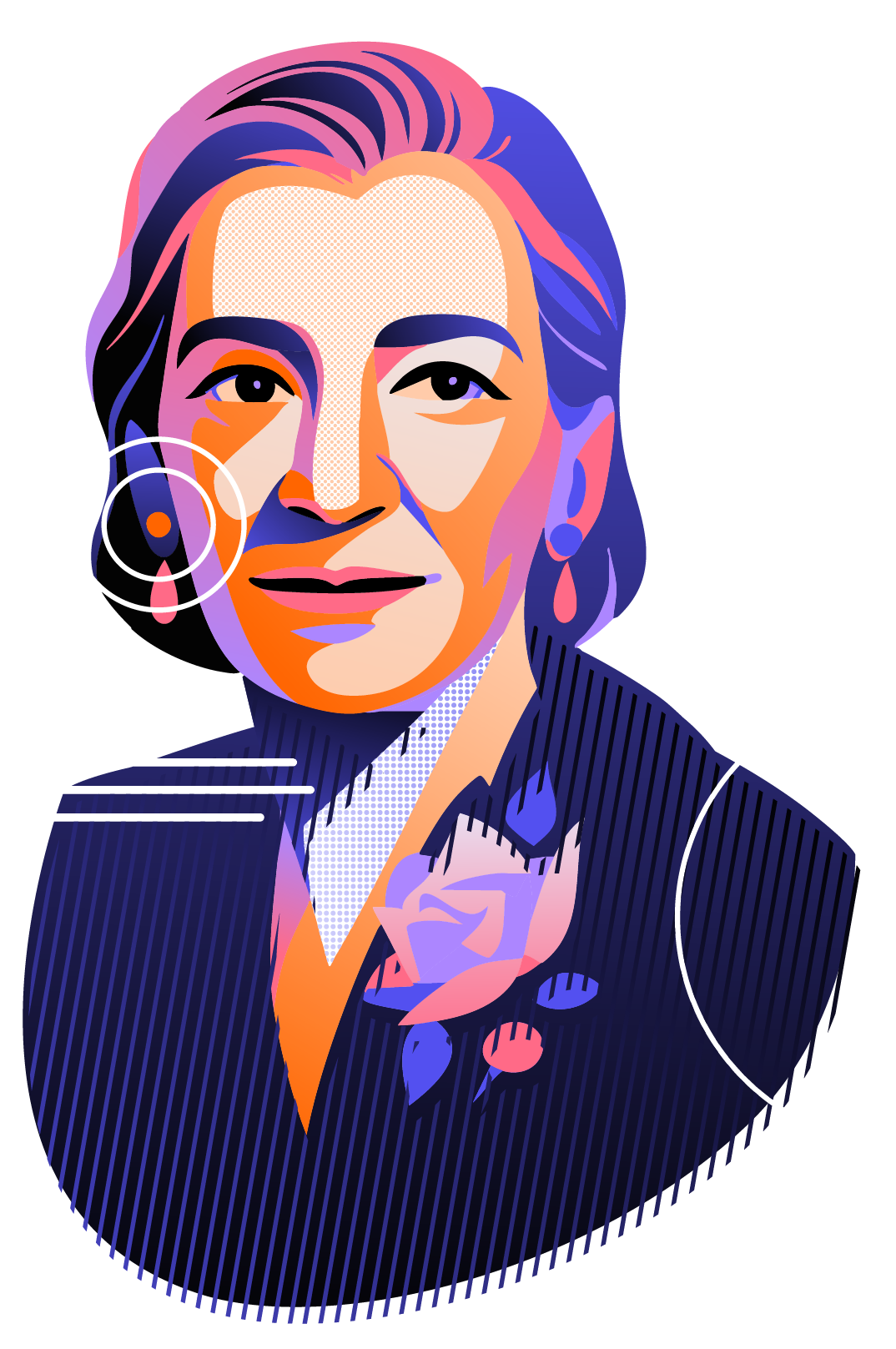
Grace
Hopper
1906 - 1992
Welcome to our Game Changers.
The world moves forward because of game changers, those who see possibilities where others see limits. Across every industry, innovative organizations are transforming the way we live.
The Original Code Whisperer
Before TikTok, app updates or arguing with your smart speaker, there was Grace Hopper, a New York-born math prodigy turned naval officer who didn’t just work with computers. She taught them how to talk to us.
While most people were still mystified by blinking machines the size of closets, Grace was calmly writing the rules that would define modern computing.
Born in 1906, Grace had a mind that wouldn’t sit still. At age seven, she dismantled seven alarm clocks just to figure out how they worked. That same boundless curiosity propelled her through Vassar College, then Yale, where she earned a Ph.D. in mathematics in 1934, an almost unheard-of achievement for a woman in the 1930s.
In 1943, Hopper joined the U.S. Navy Reserve and was assigned to the Harvard Mark I project, one of the earliest computers. She helped program the massive electromechanical beast and literally wrote its manual. After WWII, while most people were learning how to turn on a radio, Grace was already coding the future.
Then came her mic drop moment: the compiler…
In the early 1950s, Hopper created the first compiler, a tool that translates human-readable instructions into machine code. That breakthrough made high-level programming languages possible.
COBOL, which she helped design in 1959 (Common Business-Oriented Language), was one of the first programming languages intentionally crafted to be readable by humans, not just computer scientists. Instead of cryptic code, it used plain English commands like ‘IF’, ‘THEN’, and ‘DISPLAY’, making it ideal for businesses, banks, and government agencies. Hopper believed computers should understand us, not the other way around.
Decades later, billions of lines of COBOL still quietly run behind ATM transactions, airline bookings, and tax systems. So, if your paycheck showed up on time or your flight didn’t get double-booked, there’s a good chance Grace Hopper had something to do with it.
Oh, and that computer "bug" everyone talks about? Grace’s team found an actual moth in a computer relay in 1947. She taped it into her logbook, helping to popularize the term “debugging.”
Her military career was just as disruptive. The Navy attempted to retire her several times, but she kept returning, eventually rising to the rank of Rear Admiral. When she finally stepped down at 79, she was the oldest active-duty officer in the U.S. Navy. And she didn’t rest, she hit the lecture circuit, nanoseconds in hand (yes, actual lengths of wire) to explain computing speed.
Grace Hopper passed away in 1992, but her legacy endures in every software update, every programming language, and every woman who breaks barriers in STEM.
So next time your computer does what you tell it to (more or less), spare a thought for Grace, she taught the machine how to understand you, and taught the world to never underestimate a curious woman with a mission.


Innovation Solutions
At Wellspring, we empower breakthroughs. Our solutions give innovators the tools, insights, and confidence to turn bold ideas into game-changing realities. Every great innovation begins with a decision to change the game. Will you be next?
